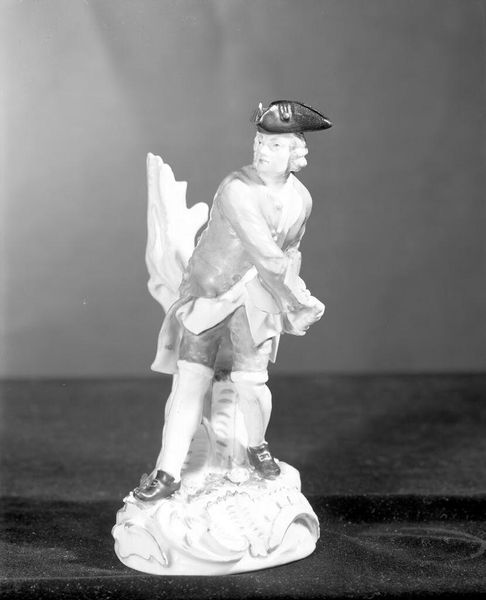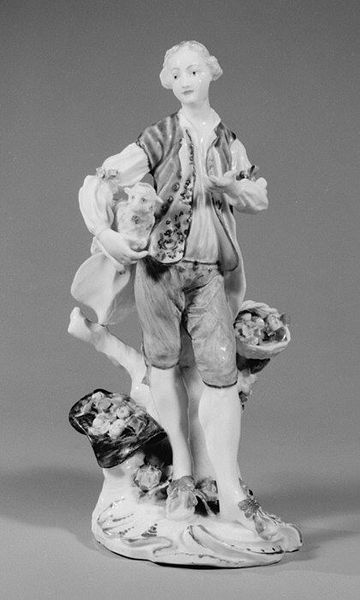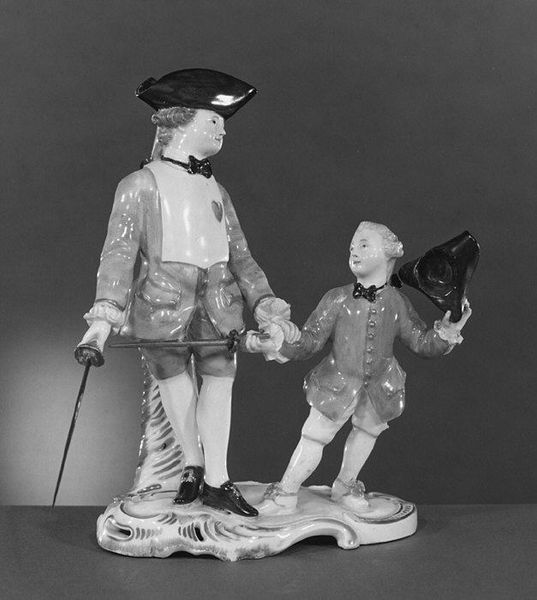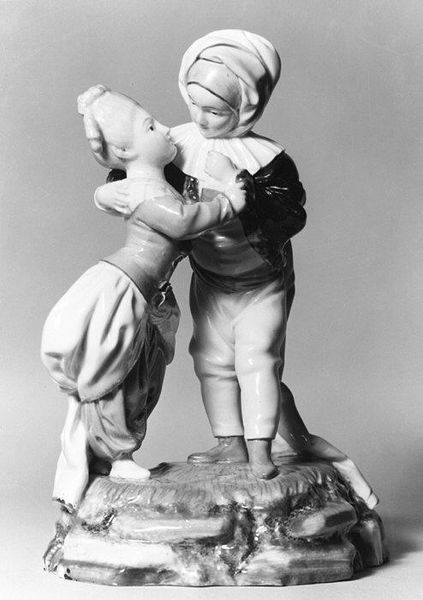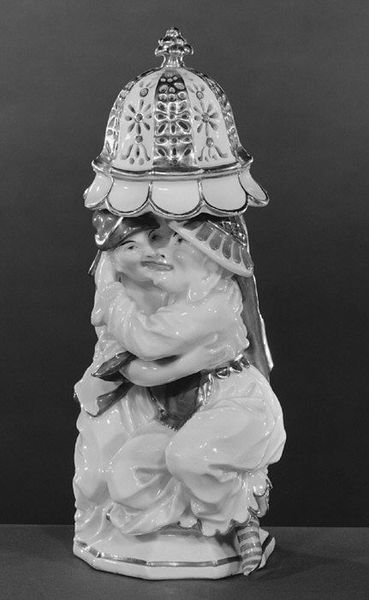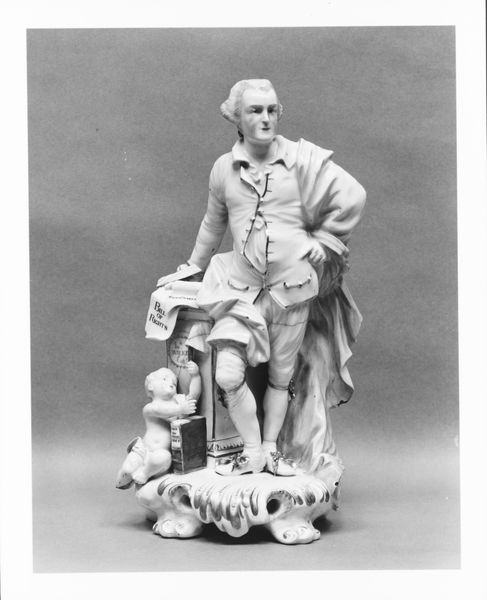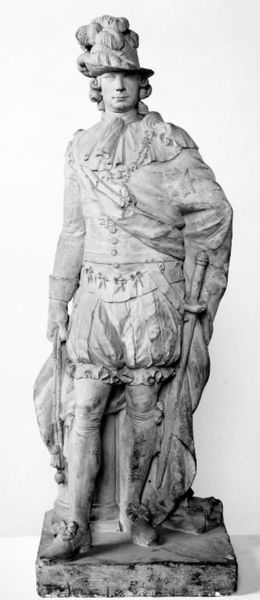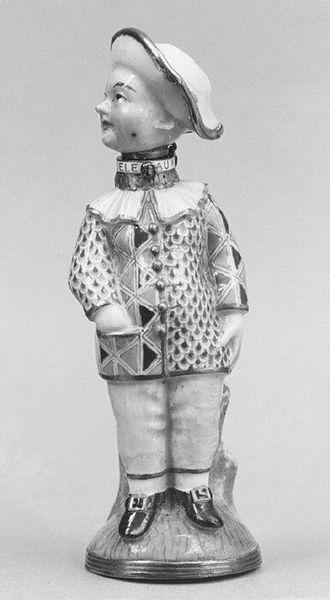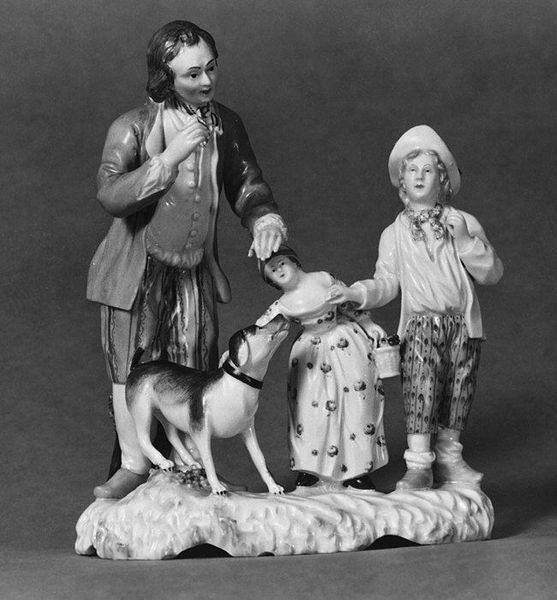
ceramic, porcelain, sculpture
#
sculpture
#
ceramic
#
porcelain
#
structure design
#
figuration
#
sculpture
#
decorative-art
#
rococo
Dimensions: Height: 5 7/8 in. (14.9 cm)
Copyright: Public Domain
Hesse-Cassel crafted this porcelain sculpture titled “The Ventriloquist” during the late 18th century. It depicts a man holding a doll, and the title prompts questions about control, manipulation, and the projection of voices or identities. Made in Germany, this work reflects the Rococo style popular at the time with its delicate features. Rococo art was favored by the aristocracy as it was light, elegant, and playful. But underneath that playful exterior was a society of strict social conventions and class structures. What does it mean to call this sculpture “The Ventriloquist”? Does this title critique the social hierarchies of the time, suggesting that some individuals or groups are merely puppets of others? Or is it an acknowledgement of the literal meaning of the piece: that some people control the narrative? To fully understand this piece, a social historian might look into 18th-century German social dynamics, gender roles, and the culture of puppetry and performance. This will help to unlock the sculpture’s hidden meanings, and to reflect on the power of art to challenge social norms.
Comments
No comments
Be the first to comment and join the conversation on the ultimate creative platform.
